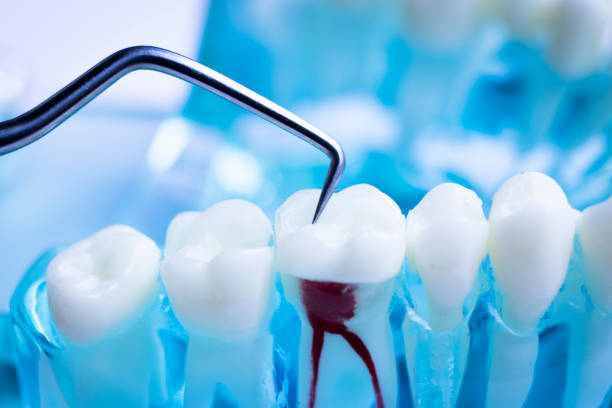Everything You Need to Know About Root Canal Treatment

Strong 8k brings an ultra-HD IPTV experience to your living room and your pocket.
Root canal treatment is a common yet often misunderstood dental procedure that can save a tooth from extraction. While the term “root canal” can conjure up images of discomfort and fear, advancements in dental technology have made this procedure more comfortable and effective than ever before. This blog will clarify what a Root canal treatment in Islamabad entails, why it’s needed, what to expect during the procedure, and how to care for your tooth afterward.
What Is Root Canal Treatment?
Root canal treatment, or endodontic therapy, is a procedure designed to treat the inside of a tooth when the pulp, the soft tissue within the tooth, becomes infected or inflamed. The pulp contains nerves, blood vessels, and connective tissue crucial during the tooth's development. However, once a tooth is fully developed, it can survive without the pulp. When the pulp becomes compromised due to deep decay, trauma, or repeated dental procedures, it can lead to significant pain and even tooth loss if not addressed. The root canal procedure involves removing the infected or damaged pulp, cleaning and disinfecting the interior of the tooth, and then sealing it to prevent further issues.
Why Is Root Canal Treatment Necessary?
A root canal becomes necessary when the pulp inside a tooth is damaged or infected beyond repair. Common reasons for this include:
Deep Decay: Cavities that penetrate deeply into the tooth can reach the pulp, leading to infection.
Cracked or Chipped Tooth: A crack or chip can expose the pulp to bacteria, resulting in infection.
Repeated Dental Procedures: Multiple treatments on the same tooth can irritate the pulp and eventually lead to inflammation or infection.
Injury or Trauma: Even if there’s no visible damage, a physical injury to a tooth can cause the pulp to become inflamed or die.
Symptoms Indicating You Might Need a Root Canal
Several signs may suggest that a root canal is necessary. If you notice any of the following symptoms, consult your dentist promptly:
Severe Tooth Pain: Persistent pain, especially when chewing or applying pressure, can indicate pulp damage.
Prolonged Sensitivity: Sensitivity to hot or cold that lingers after the stimulus is removed.
Swollen or Tender Gums: Swelling, tenderness, or a small bump on the gums near the affected tooth can signal an infection.
Tooth Discoloration: A tooth that darkens, turning gray or brown, may suggest pulp damage.
Abscess Formation: A pimple-like bump on the gums near the affected tooth, often with pus, indicates an abscess.
The Root Canal Procedure: What to Expect
Understanding the root canal process can alleviate anxiety. Here’s what typically happens:
Consultation and Diagnosis: Your dentist will examine the tooth and take X-rays to determine the extent of the damage and if a root canal is needed.
Anesthesia: Local anesthesia is applied to numb the area around the tooth, ensuring a comfortable procedure.
Accessing the Pulp: The dentist creates a small opening in the tooth’s crown to access the pulp chamber and root canals.
Removing the Infected Pulp: Specialized tools are used to remove the infected or damaged pulp from inside the tooth.
Cleaning and Shaping the Canals: After removing the pulp, the dentist cleans and shapes the canals to eliminate bacteria and debris.
Filling the Canals: The cleaned canals are filled with a biocompatible material called gutta-percha to seal the space and prevent re-infection.
Sealing the Tooth: The tooth is sealed with a temporary or permanent filling. A crown may be placed over the tooth in a follow-up visit to restore its strength and functionality.
Post-Treatment Care and Recovery
After a root canal, some discomfort or sensitivity is normal but usually subsides within a few days. Here’s how to ensure a smooth recovery:
Avoid Hard or Sticky Foods: Until the tooth is fully restored with a crown, avoid chewing on the treated side to prevent damage.
Maintain Oral Hygiene: Continue to brush and floss regularly, but be gentle around the treated tooth.
Follow-Up Appointments: Attend any follow-up visits to ensure the tooth heals properly and the final restoration is completed.
Benefits of Root Canal Treatment
Root canal treatment offers several significant benefits:
Pain Relief: The procedure aims to relieve the pain caused by an infected or inflamed tooth.
Preserving Your Natural Tooth: It allows you to keep your natural tooth, which is better than extraction.
Restoring Functionality: Once restored with a crown, the tooth will function normally, allowing you to chew and speak without issues.
Preventing Further Infection: By removing the infected pulp, a root canal prevents the spread of infection to other teeth and gums.
Dispelling Common Myths About Root Canal Treatment
Several myths surround root canal treatment. Here are some common misconceptions:
Myth 1: Root Canals Are Painful: Modern techniques and anesthesia make root canals no more painful than getting a filling. The procedure is designed to alleviate pain, not cause it.
Myth 2: Extraction Is Better Than a Root Canal: While extraction might seem simpler, preserving your natural tooth is preferable. A root canal maintains your tooth’s function and appearance.
Myth 3: Root Canals Cause Illness: There is no scientific evidence linking root canals to systemic Root Canals Cause Illness: There is no scientific evidence linking root canals tohealth problems. This outdated myth has been debunked by modern research.
Conclusion
Root canal treatment is a safe and effective way to save a damaged or infected tooth, allowing you to preserve your natural smile and avoid more severe dental issues. With advancements in dental technology, the procedure is relatively painless and offers long-term benefits, including pain relief, tooth preservation, and restored functionality. If you’re experiencing symptoms that suggest you might need a root canal, consult your dentist without delay. Early intervention can prevent complications and help you maintain a healthy, beautiful smile.
Note: IndiBlogHub features both user-submitted and editorial content. We do not verify third-party contributions. Read our Disclaimer and Privacy Policyfor details.


